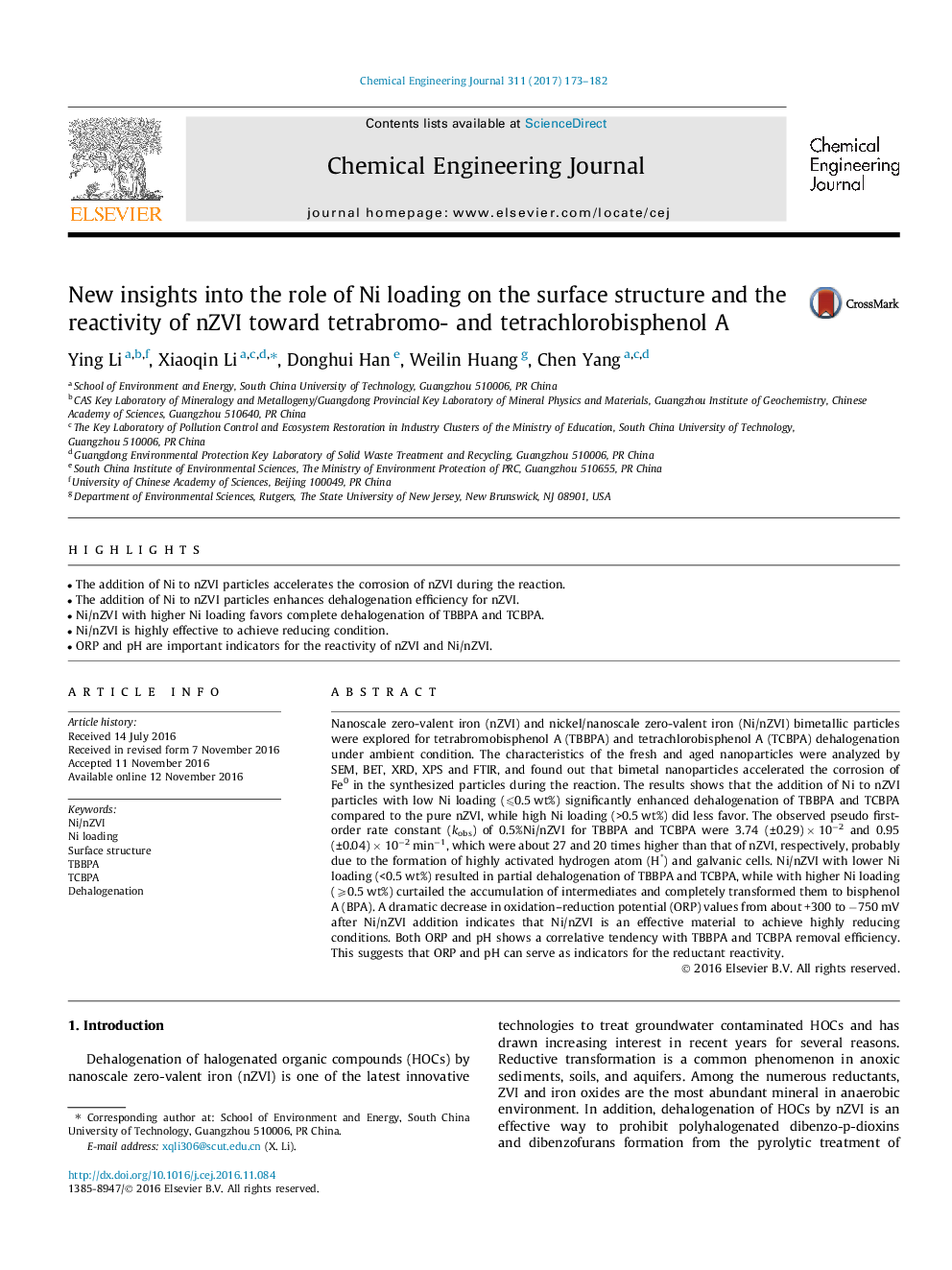| کد مقاله | کد نشریه | سال انتشار | مقاله انگلیسی | نسخه تمام متن |
|---|---|---|---|---|
| 4763416 | 1422967 | 2017 | 10 صفحه PDF | دانلود رایگان |
عنوان انگلیسی مقاله ISI
New insights into the role of Ni loading on the surface structure and the reactivity of nZVI toward tetrabromo- and tetrachlorobisphenol A
دانلود مقاله + سفارش ترجمه
دانلود مقاله ISI انگلیسی
رایگان برای ایرانیان
کلمات کلیدی
موضوعات مرتبط
مهندسی و علوم پایه
مهندسی شیمی
مهندسی شیمی (عمومی)
پیش نمایش صفحه اول مقاله

چکیده انگلیسی
Nanoscale zero-valent iron (nZVI) and nickel/nanoscale zero-valent iron (Ni/nZVI) bimetallic particles were explored for tetrabromobisphenol A (TBBPA) and tetrachlorobisphenol A (TCBPA) dehalogenation under ambient condition. The characteristics of the fresh and aged nanoparticles were analyzed by SEM, BET, XRD, XPS and FTIR, and found out that bimetal nanoparticles accelerated the corrosion of Fe0 in the synthesized particles during the reaction. The results shows that the addition of Ni to nZVI particles with low Ni loading (⩽0.5 wt%) significantly enhanced dehalogenation of TBBPA and TCBPA compared to the pure nZVI, while high Ni loading (>0.5 wt%) did less favor. The observed pseudo first-order rate constant (kobs) of 0.5%Ni/nZVI for TBBPA and TCBPA were 3.74 (±0.29) Ã 10â2 and 0.95 (±0.04) Ã 10â2 minâ1, which were about 27 and 20 times higher than that of nZVI, respectively, probably due to the formation of highly activated hydrogen atom (H*) and galvanic cells. Ni/nZVI with lower Ni loading (<0.5 wt%) resulted in partial dehalogenation of TBBPA and TCBPA, while with higher Ni loading (⩾0.5 wt%) curtailed the accumulation of intermediates and completely transformed them to bisphenol A (BPA). A dramatic decrease in oxidation-reduction potential (ORP) values from about +300 to â750 mV after Ni/nZVI addition indicates that Ni/nZVI is an effective material to achieve highly reducing conditions. Both ORP and pH shows a correlative tendency with TBBPA and TCBPA removal efficiency. This suggests that ORP and pH can serve as indicators for the reductant reactivity.
ناشر
Database: Elsevier - ScienceDirect (ساینس دایرکت)
Journal: Chemical Engineering Journal - Volume 311, 1 March 2017, Pages 173-182
Journal: Chemical Engineering Journal - Volume 311, 1 March 2017, Pages 173-182
نویسندگان
Ying Li, Xiaoqin Li, Donghui Han, Weilin Huang, Chen Yang,